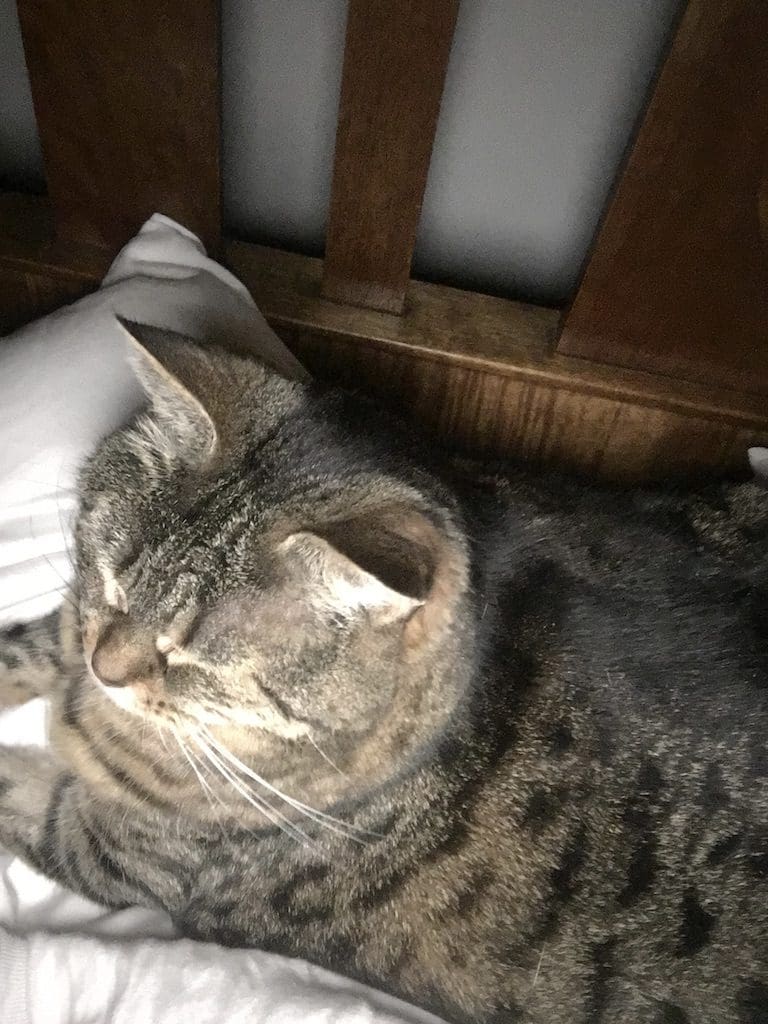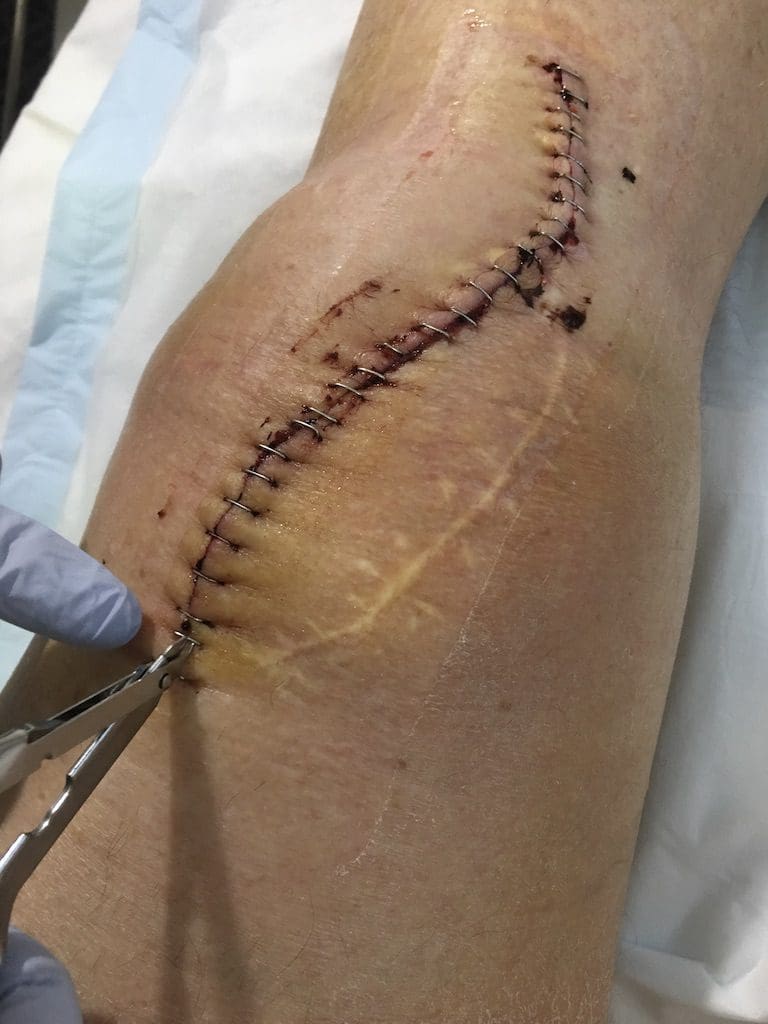Total Knee Replacement weeks 3 to 5
Saturday 25 August 2018. Day 16. First day without any crutches – just around the house. The skateboard is certainly helping to achieve more of a bend. Sitting with the leg just dangling is also very helpful. I have already achieved a straight leg while sitting with my leg extended. However, when I walk, I keep my knee bent. Why? As a result, my walking is fairly ordinary. I still cannot bend my knee enough to be able to use the stationary bike. Getting very bored.
Monday 27 August 2018. Day 18. Visit to physio Paul for more advice especially on bending and visit to GP to have the final dressing removed.
Tuesday 28 August 2018. Day 19. A very interesting visit to my surgeon, Dr Andrew Redgment, who wants me to be able to bend my knee more than 90º within two more weeks – or else he will have to bend it for me under anaesthetic. A bit of a threat. However, he did offer extremely good advice on how to get the bend happening. Viz. With the knee bent as much as possible: 1) vigorously tap that toe; 2) with the foot jammed on the floor, bring the hip forward; 3) give deep massage to all the muscles, fascia that are tight and preventing the knee bending; 4) use creams to assist massage; 5) you can do much more. Good advice. With Helen doing the massage and me squirming, we managed to get sufficient bend to do 5 revolutions of the bike (rotating backwards). For some reason, my right calf is extremely painful.
Wednesday 29 August 2018. Day 20. A day of exercise. My pattern was – on the half hour, stretch the knee back as far as possible and massage all the tight points (using Hyroid cream and Arnica) for 5 minutes, then one the bike for as many backward revolutions as possible (usually 30), then sit with legs down until the hour, then sit with legs up til the half hour when it began again. I managed 8 of these rounds and a total of 200 revolutions on the bike. My bend had increased to 98º (last measured at 115º). I may have overdone it as my knee became a little swollen and I had an uncomfortable night. But, have to know when to stop. I know that I have to push and I can understand that there is a ‘too-far’ line that I should approach but not cross. Ha.
Thursday 30 August 2018. Day 21. More exercise today – stretching and massage. At the beginning, I had lost much of the bend and could achieve only 111º. This quickly reduced (with Helen’s massage) to 95º and then 92º. Working on lifting the toe and then pushing the foot back. Not pleasant, but bending. Despite much effort, we could not get it any further back than 92º, however, this bend is enough for me to be able to do forward rotations on my stationary bike.
Friday 31 August 2018. Day 22. The bike is becoming easier – especially with the toe pointed. 0.5 km is not difficult. However, I made the mistake of going out to a U3A event in the morning. This meant that 1) I did not do my exercises; 2) I did not rest properly. Viz, I wore myself out for no gain – except social contact with interesting people.
Saturday 1 Sep 2018. Day 23. Sleeping is still an issue. I wake up about every hour.
Monday 3 Sep 2018. Day 25. Visit to physio. Good news and bad news. Good news – the bend is looking good as is the wound. I can go into the pool. A new set of exercises. The bad news – my straightening has deteriorated. I now have to work hard to recover that. Bugger. Spent 15 minutes in the Grange pool. Walking forward was difficult as was side-step towards the ‘bad side’. Resistance of the water in the pool will certainly help build functional and sideways stability of the knee – especially as it no longer has any cruciate ligaments.
Tuesday 4 Sep 2018. Day 26. Overdid it in the pool. I did not do much and was feeling very good while doing the 5 exercises. However, the knee has stiffened up and become a little painful. Bugger. It is certainly difficult to judge the boundary between enough and too much.
Wednesday 5 Sep 2018. Day 27. Recovery from yesterday. Much the same set of exercises every hour. Five sets of exercises (total of 9 km on the bike) and a quick set of exercises in the pool. Much thought given to not overdoing it. Used a bit of heat for a while in the evening.
Thursday 6 Sep 2018. Day 28. Today is four weeks since the surgery. I woke from quite a good night’s sleep having managed to sleep on both sides and my front. Feeling very good.
Monday 10 Sep 2018. Day 32. Visit to physio. I am going very well. Bend in the knee is well over 90º now and we think it is about 105º. I’m now allowed to do a few strengthening exercises – wall hold and a few step ups, plus encouraged to do leg curls and hamstring stretches. I’m allowed to drive at last. First time driving the new car. Helen has done about 1,000 km running around in the last 30 days.
I’ve said this a few times. When I look from day to day, there is very little improvement and in fact many days appear to be steps backwards in that I need to just sit and recover from the efforts the day before. However, when I look from week-to-week, there is enormous improvement in what I can now do compared to what I could not do the week before.
Wednesday. 12 Sep 2018. Day 34. One day short of five weeks since surgery. Visit to surgeon Dr Andrew Redgment. Excellent progress. Keep it up. I can now take off my TED stockings. I’ve pencilled myself in to have the other knee done in early Feb next year.









